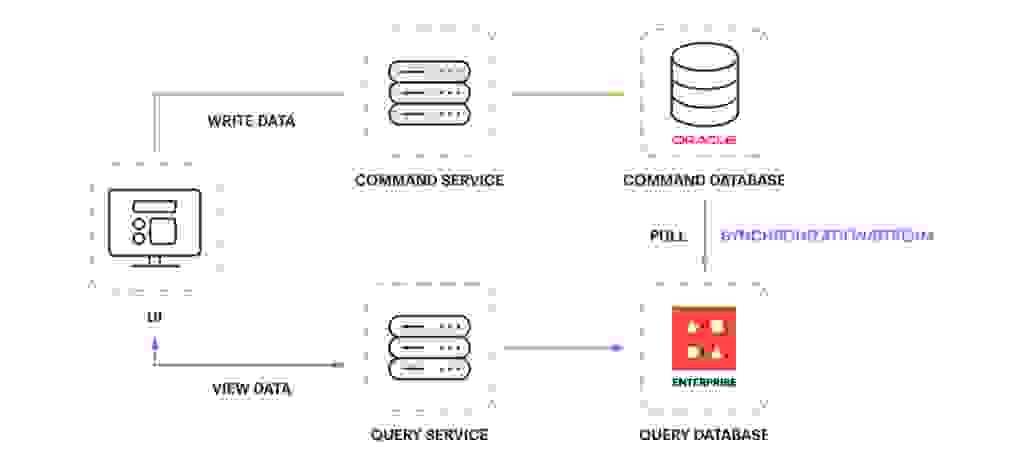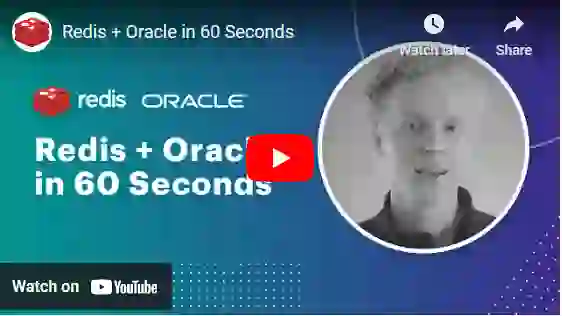
Learn more

How can Redis Enterprise support your Oracle SQL database as a cache or primary database? Migrating to a NoSQL database can be tricky, but luckily, Redis Enterprise can seamlessly fit into your current data stack, allowing it to work in conjunction with your existing architecture. Below, we’ve broken down three reasons why Redis is the answer to your most pressing Oracle obstacles. For a thorough breakdown, explore our solution brief below.
Download Modernize Your Oracle Database With Redis Enterprise
Oracle is a widely used relational database management system (RDBMS) and well known… sometimes not for the best reasons. When it comes to Oracle performance, we naturally think of Oracle performance tuning for complex, expensive SQL queries and more. When Oracle cost is concerned, we naturally think of astronomical license costs and read/write access costs, to name just a few.
What about using Oracle for modern use cases? You might think of Oracle cache, also known as Oracle Times Ten, which is Oracle’s in-memory solution for Oracle caching but doesn’t provide flexibility with data types like hashes, sorted sets, streams, and so many more. This impacts performance and locks development options out of modern use cases.
Redis Enterprise, the leading real-time data platform, can be used alongside Oracle to store data in-memory to greatly relieve these common Oracle speed, cost, and data type limitation challenges. Time to do more with your Oracle data and enable modern solutions!

Oracle lacks the speed needed to power modern use cases like real-time analytics, fraud detection, and financial transaction processing, just to name a few. Oracle needs frequent tuning, and it’s not a once-and-done kind of a thing; it’s a constant state of “room for improvement.”
This is not necessarily unique to Oracle – it’s a common RDBMS challenge! RDBMS require continuous tuning and streamlining to execute SQL statements to improve query response times and application operations. This Oracle performance tuning process starts by pinpointing the source of bottlenecks – is it a complex SQL statement that needs simplifying, an optimizer problem, or even an issue with the hardware itself?
And those are only the high-level issues to troubleshoot; we can dig deeper into input and output (I/O) measures, optimizer metrics, and instance settings before tuning SQL statements one by one.
Once you’ve done all you can with I/O measures, the optimizer, and instance settings, performance rests on identifying and optimizing cost-intensive SQL queries, especially if these queries are frequently read!
But it doesn’t have to be this way if you use Redis. Consider using Redis Enterprise with your Oracle database to store frequently read data in-memory and gain sub-millisecond performance.
Redis Enterprise can also be used for secondary indexing to perform sub-millisecond queries on Oracle data held in secondary keys. No need to avoid mixing data types that eventually cause bottlenecks in your Oracle database; there is no need to reverse engineer complex queries. Once you’ve identified the cost-intensive and complex queries that need fast response times, you can use Redis Enterprise to offload those bottlenecks to improve Oracle performance.
Redis Enterprise not only adds speed but greatly reduces the number of read requests sent to your Oracle database, significantly reducing costs. Speaking of Oracle costs, let’s dive into what Redis Enterprise can do for those ever-growing Oracle database license costs.

With Oracle, costs can be another major challenge. For starters, Oracle database license costs can add up quickly if you use user- or core-based licenses. Because of the high volume of reads and writes and complex queries that require vast database resources, the costs can add up quickly.
This model often leads to an “only use it when you need it” mentality when so many other solutions don’t punish you with user thresholds or inflexible resource billing. So what can we do with our Oracle costs? We return to those two main pain points – frequently accessed read/writes and resource intensive/complex queries.
Redis Enterprise can be used to store frequently accessed data where it won’t incur costs based on how many users read/write. Redis Enterprise is also much faster at processing queries, which ultimately reduces the costs and resources needed. Using Redis Enterprise alongside your Oracle database allows you to incur expensive Oracle database executions only when needed, reducing Oracle transactions (while adding real-time speed) and optimizing those frequently accessed data and pesky queries.
And the cherry on top? Redis Enterprise has flexible scalability – use it as you need it. Scale up or down without being locked to a certain amount of cores, nodes, or clusters.
Oracle wasn’t built to support the diverse data needs of modern applications. In today’s world, applications need flexible data types and data models that are easily and quickly deployed anywhere in the world. Need more Oracle use cases? Look no further.
Redis Enterprise can unlock data in your Oracle database by supporting the diverse data types and data models that are the backbone of modern-day applications.
For example, Redis Enterprise has a built-in real-time search engine that can be used on top of your Oracle database to speed up complex queries dramatically. This reduces the time it takes to return that data to your customers and services and could also be used to offload those expensive and complex queries. That’s just one example; there are many other data engines and data models that Redis Enterprise supports out of the box to help consolidate all of your real-time needs on one scalable platform, not just for Oracle:
This should be a good start on transforming your Oracle database’s speed and costs while adding modern use cases. The next question you might have is, “How do I start this Oracle integration with Redis Enterprise?” We have Redis Connect, our CDC (change data capture) tool that can help move part of your frequently accessed data or complex queries in this Oracle migration. Check out how to get more out of your Oracle database with Redis Enterprise in our solution brief below.